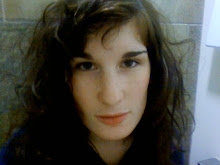TECHNOLOGY
n., pl., -gies.
The application of science, especially to industrial or commercial objectives.
The scientific method and material used to achieve a commercial or industrial objective.
Electronic or digital products and systems considered as a group: a store specializing in office technology.
Anthropology. The body of knowledge available to a society that is of use in fashioning implements, practicing manual arts and skills, and extracting or collecting materials.
[Greek tekhnologiā, systematic treatment of an art or craft : tekhnē, skill + -logiā, -logy.]
In thinking of language as a technology, it is good to have a definition of “technology” to work with. Definitions have this way of not describing anything truly; this is the clearest indication to me that Bernstein's point about writing altering language is accurate. Especially in terms of language as being primarily spoken throughout time versus the relatively recent advent of writing systems, it's hard even to define what language is. If you “use the Google” on yr “internet machine” to find a definition for “standard English” you will have a lot of difficulty finding a comprehensive definition. Every definition that comes up describes a variety of English that is not specific to a region (huh?), but it is most closely aligned with the language use in a specific region ie Britain (huh?!), and/or that it is the variety of English that is considered proper by most people. By these definitions either almost everyone speaks standard English, or no one does. Some people try to define standard English as how a person would write, versus how a person would speak, a notion that does suggest that writing enforces a certain level of consciousness that is different than the level required/involved when speaking. However, idk, fyi, it seems like the technologies we have are definitely having an impact on how we use written language to communicate pdq.
Language as a technology evolves alongside the emergent mediums in which we can make use of it. Furthermore, an individual's use of language emerges from the situation of the speaker in specific contexts, and the speaker deciphers the kind of language available to hir to use in that situation based on how they want to be perceived. So, it seems the process of writing generally imposes some rigid restrictions on how and what we can do with language in a given medium, whereas spoken language has more fluidity and dimension. To get back to my title, this is perhaps the origin of the phrase “written in stone:” writing signifies a record, something fixed and unchangeable, with definite finality. This phrase is most likely derived from primitive forms of writing, I tried to find the origin of this phrase online and only got pages and pages of articles on cemeteries (“History Written In Stone!”) so I can't be certain, but it is interesting to think how more recent writing technologies have perhaps brought back some of the fluidity and agency of speakers and voices to writing.

